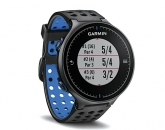
What connections do you see between golf and investing?
The need to keep patient. It helps in both disciplines. If you try and force the issue in golf – if you get too aggressive, for instance – it can end up costing you on the scorecard. The same applies with investing. You can’t be too gung-ho with your investments and expect them to always work out. Knowing when to be aggressive and when to take a more conservative approach is vital.
When did you start playing?
My parents introduced me to golf when I was seven years-old. I learnt to play at the then Royal Hong Kong Golf Club through the junior golf programme run by Lee Parker. I am forever grateful to Lee for giving me good fundamentals – grip, posture and alignment–that have served me pretty well over the years. I had a five handicap at the age of 18 but managed to get down to plus-one at 21 after spending three years in the US.
How often do you play?
My wife says too often! It tends to average to around four times a month as I like to try and get at least one game on the weekend. Even though I am in the golf business I play relatively little through work, most of my golf is social or in competition. I travel once or twice a year for the sole purpose of enjoying a few rounds.
What's been your best ever round?
I’ve had two rounds that were particularly memorable. The first was a 64 in a medal competition at Rye Golf Club in England, and the second was just a few weeks ago: a 65 on the New Course at Fanling. I birdied the last three holes on both occasions.
Pages
Click here to see the published article.











